The woman who spoke Ktunaxa at the United Nations
Aiyana (Sa’tahtaki) Twigg brings Ktunaxa to the global stage while grounding her work in home and community
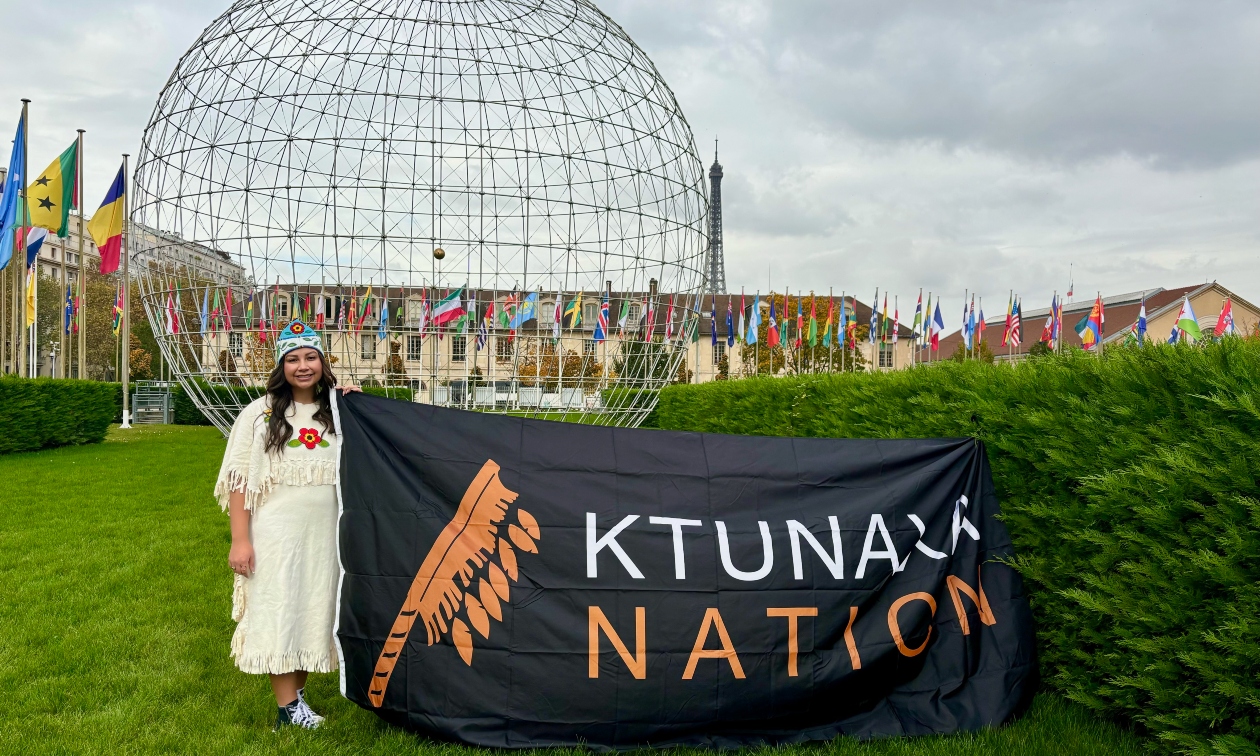
— Photos courtesy Aiyana Twigg
Aiyana (Sa’tahtaki) Twigg is part of a growing generation of Indigenous scholars who are transforming how language, culture, and identity are understood—both within academic institutions and across community spaces. A member of the Ktunaxa Nation through her mother and Kainai (Blackfoot) through her father, she grew up in ʔamakʔis Ktunaxa, surrounded by fluent speakers, ceremony, and land-based teachings. Now pursuing her Master of Education in Indigenous Language Revitalization at the University of Victoria, Aiyana’s work bridges Western linguistics with Indigenous knowledge systems, ensuring that language revitalization remains rooted in ceremony, story, and lived experience.
Her journey has already taken her from local classrooms to international stages. As a Youth Member of the Canadian Commission for UNESCO, Aiyana has spoken Ktunaxa at the United Nations in New York and at UNESCO headquarters in Paris—moments that represent both personal healing and collective pride. Through her research, advocacy, and leadership, she continues to advance the movement for Indigenous language resurgence, digital learning innovation, and authentic reconciliation. We were honoured to speak with her, and to learn more about her endeavours.
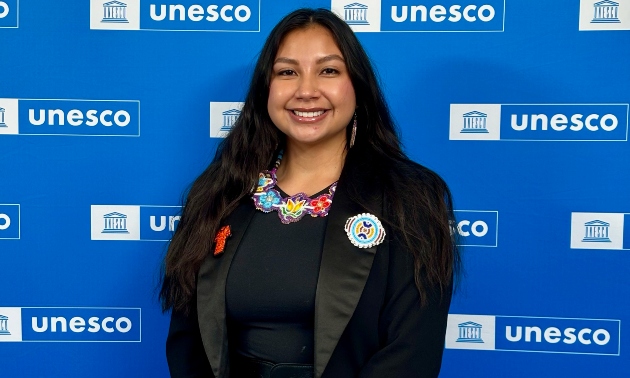
What does the name “Sa’tahtaki” mean, and how does it guide you?
Sa’tahtaki means “woman on the other side of the mountains” in Blackfoot. I was given this name by my Blackfoot relatives to honour both of my Indigenous identities. I am Ktunaxa on my mother’s side and Blackfoot, registered Kainai, on my father’s. I grew up in ʔamakʔis Ktunaxa, in Yaq̓it ʔa·knuqⱡiʔit (Tobacco Plains). Growing up, I was surrounded by fluent Ktunaxa speakers. I attended ceremonies, spent time on the land, danced, and prayed in Ktunaxa. I didn’t know much about the Blackfoot language or culture, but recently I’ve begun the journey of reconnecting with that part of myself. This name reminds me that I come from two strong Indigenous Nations with a long and shared history. It grounds me and guides me in my work, reminding me of the importance of reclaiming and living both of my languages and cultures.
How did you first become interested in linguistics as a formal discipline?
I first became interested in linguistics when I was 17, though the roots of that interest are deeply tied to my experiences with identity and belonging. While I grew up in Yaq̓it ʔa·knuqⱡiʔit, I attended school across the border in Eureka, Montana, through the Jay Treaty. My time there was not always positive. I often faced racism and discrimination from teachers and classmates because of my “Indian” identity. By the age of ten, I had decided not to learn the Ktunaxa language as a way to protect myself from that harm. For years, I struggled with an internal conflict about who I was.
That began to change the summer before my final year of high school. While hiking in ʔamakʔis Ktunaxa (Ktunaxa territory), I had a spiritual experience: my ancestors visited me. They didn’t speak with words, but through a feeling I understood: “This is where you are meant to be.” In that moment, I began to heal. I started reclaiming my language and reconnecting with my identity.
Soon after, my mother, Leanna Gravelle, returned home from a UBC Breath of Life Conference focused on Indigenous language revitalization. She told me about the urgent state of the Ktunaxa language, that only about 20 fluent speakers remained, and explained that without our language, we risk losing who we are as Ktunaxa. Her words struck something deep within me. I realized then that our language is powerful. It carries our identity, our teachings, and our connection to the land.
Even though I didn’t yet know what linguistics was, I knew I wanted to study it to help my community. That calling led me to apply to UBC to pursue linguistics and Indigenous language revitalization. I graduated in 2022 with a Bachelor of Arts degree and double major in First Nations and Endangered Languages (FNEL) and Anthropology. Since then, my work has focused on bridging Western linguistic frameworks with Indigenous ways of knowing, grounding language in culture, ceremony, and holistic learning. I am currently completing a Master of Education in Indigenous Language Revitalization at the University of Victoria. My research focuses on the Ktunaxa sound system, and I’m excited to complete my project and share it with the Ktunaxa Nation. I will be graduating in June 2026 and plan to begin a PhD program at the University of British Columbia Okanagan in September 2026!
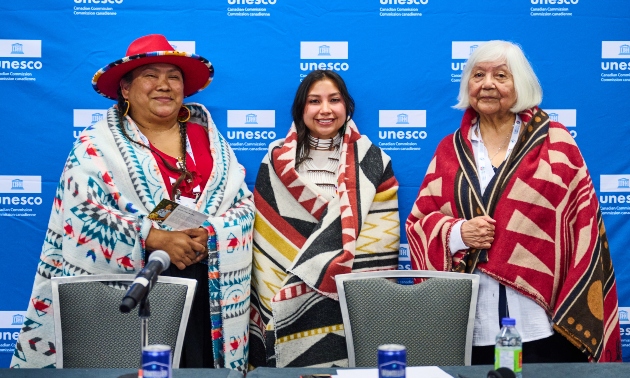
What’s something most people don’t understand about how language and culture are connected?
Most people think of language simply as a means of communication. A set of sounds and symbols used to convey information. But our languages are far more than technical systems. They encode our lived experiences, reflect the landscapes and biodiversity we inhabit, and carry the values, histories, and identities of our communities. Our languages have a spirit, and by speaking and reclaiming them, we reawaken that spirit and nurture the healing of our identities.
What drew you to focus so deeply on Ktunaxa language revival?
As I mentioned, Ktunaxa is critically endangered, with only about 18 fluent speakers remaining. Reclaiming my language has had a profound impact on my health, wellbeing, and sense of belonging. I came to understand the power of our language in healing intergenerational trauma. This inspired me to support others in my community and help ensure that our language thrives for future generations.
What has been your proudest moment so far in the work of language revitalization?
Being a community linguist, researcher, and youth advocate, I’ve been fortunate to experience many proud and unforgettable moments in my journey. Too many to choose just one. But if I had to share a few highlights, three moments stand out most clearly.
The first was in 2024, when I was invited to attend the 23rd Session of the United Nations Permanent Forum on Indigenous Issues in New York as a Canadian Youth Delegate with the Canadian Commission for UNESCO (CCUNESCO). While there, I spoke at four side events and had the opportunity to speak Ktunaxa for the first time at the United Nations headquarters, to advocate for our language, share its critical state, and assert our rights as Indigenous Peoples. What made it even more meaningful was having my parents in the audience, watching me speak Ktunaxa on an international stage.
Shortly after, I was invited to give the closing remarks at the Voices of Resilience event at the UNESCO headquarters in Paris. It was the first time Ktunaxa had ever been spoken in that space, across the world, in Paris! Standing there, representing my community and our ancestors, was surreal and deeply humbling.
Most recently, the Ktunaxa Nation gifted the CCUNESCO International Decade of Indigenous Languages Working Group a name in our language. As both a youth member of the working group and a citizen of the Ktunaxa Nation, I helped organize and facilitate the conversations leading up to the naming ceremony. The ceremony took place in Ottawa during WAVES 2025, the Global Indigenous Languages Summit hosted by the Office of the Commissioner of Indigenous Languages. It was an honour to have our people, language, and contributions recognized once again on a national and international stage, and even more special that a full Ktunaxa delegation was present to witness this momentous occasion.
In all these moments, I’ve realized that language revitalization is not just about preserving words. It’s about reclaiming our identity, our culture, and our connection to one another. Seeing the recognition of our work globally, while knowing it all began at home, in the Ktunaxa Nation, has been one of the most powerful experiences of my life.
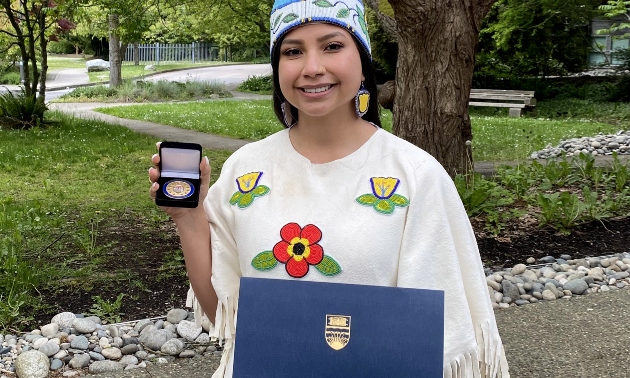
You’ve built digital learning communities—what role do you see tech playing in cultural renewal?
Technology is an incredible tool for cultural renewal because it connects people who might otherwise be separated by geography or circumstance. Digital platforms allow Indigenous learners to access language resources, practice together, and share stories in ways that weren’t possible before. But technology isn’t a replacement for relationships or ceremony, it works best when paired with community guidance, cultural context, and storytelling. In that sense, it’s a bridge: connecting learners while honouring the traditional ways of knowing.
What have been the biggest challenges in creating inclusive, digital-first spaces for learning Ktunaxa?
Creating digital spaces for language learning is not just about accessibility; it’s about cultural integrity. One challenge is ensuring that these platforms reflect community knowledge and values while being user-friendly. Another is the emotional labour involved: many language learners and teachers carry the weight of intergenerational trauma, and digital spaces need to feel safe and supportive. Balancing the technical and the cultural, while keeping the community’s voice at the center, is ongoing work.
What makes a language app or platform successful for Indigenous learners, in your experience?
Success comes from relevance and connection. A good language platform does more than teach vocabulary; it weaves in stories, history, ceremony, and identity. Learners need to see themselves and their community reflected in the content. Platforms also need to be accessible and flexible, allowing learners of different ages and skill levels to engage at their own pace. When technology amplifies culture rather than replacing it, it becomes a powerful tool for revitalization.
How do you decide which projects to take on, given the huge need and limited time?
I focus on projects that create sustainable, long-term impact. My approach always begins with listening, to community Elders, youth, and language experts, to understand what is most needed. Sometimes that means choosing to prioritize smaller, capacity-building projects rather than trying to take on everything at once. I’ve learned that true impact comes from aligning my energy with the community’s priorities, not from doing it all myself.
One example is my work as a Programme Assistant for the Culture Sector at the Canadian Commission for UNESCO, where I served as the lead author and developer of Safeguarding Your Language Through Documentation: A Toolkit for Beginners. This resource, available in English, French, and Spanish, was designed to help Indigenous communities document and protect their languages in accessible, culturally grounded ways. I took on this project because I recognized the need for practical, community-driven tools that empower Indigenous Peoples to lead their own documentation efforts.
Since its publication in October 2024, the toolkit has been widely received by Indigenous communities, universities, and national and international organizations. These are the kinds of projects I care about most. Ones that center Indigenous voices, respond directly to community needs, and build lasting pathways for language revitalization.
What do you wish non-Indigenous Canadians understood about reconciliation beyond land acknowledgements?
Reconciliation is relational, not symbolic. Land acknowledgements are an important first step, but they are only meaningful when followed by action that supports Indigenous self-determination, language survival, and cultural continuity. While I recognize the progress we’ve made and the allies who have joined this journey, reconciliation cannot end with words or symbolic gestures. Such as only wearing orange on September 30th and tucking that shirt away for the rest of the year without further action.
True reconciliation requires ongoing commitment. It means learning about the Truth and Reconciliation Commission’s Calls to Action and taking responsibility for how you can help bring them to life. You don’t need to memorize all 94, but you should know a few, understand what they mean, and reflect on how your work, school, or community can contribute.
Most importantly, reconciliation means showing up consistently, listening deeply, and supporting Indigenous communities in ways they identify as meaningful. It’s about building respectful relationships rooted in accountability, humility, and action.
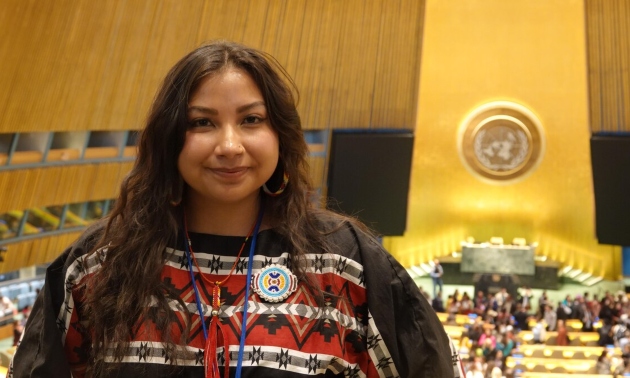
Your leadership style centers on deep listening—how do you practice that in fast-moving environments?
Deep listening is intentional. Even in fast-paced environments, I make it a priority to pause, ask questions, and center voices other than my own. It’s about understanding context and perspective, especially when decisions impact community knowledge, relationships, or wellbeing. I’ve learned that leadership isn’t about moving quickly for efficiency’s sake but about moving thoughtfully and collaboratively. Listening deeply is an act of respect, humility, and accountability, values that have guided me since childhood, taught by my elders and mentors.
When you’re speaking to youth, what message do you try to leave them with?
I tell youth to start where they are, and not to wait until they feel “ready” or fluent. Reclaiming your language and culture is a journey, and every small step matters. The work can feel slow or overwhelming, but every effort contributes to the survival and revival of language, identity, and community. Most importantly, I remind them that their voice and their participation are powerful. I tell them that our dreams are never too big or too far. Make big dreams and continue to be passionate about what you believe in!
What’s something you’ve had to unlearn on your leadership journey?
I’ve had to unlearn the idea that leadership is about doing everything yourself. True leadership is about creating spaces for others to contribute, valuing their expertise, and supporting them to grow. I’ve learned that letting go of control and trusting community knowledge actually strengthens outcomes and ensures sustainability.
If you could write one sentence on a wall for the next generation to see every day, what would it say?
Maʔȼ huq̓uȼkun ka·kⱡukaqwaⱡa – Don’t let the fire of our language burn out. It’s a reminder that language and culture are living, breathing things, and that every effort to reclaim and nurture them contributes to the resilience of future generations.

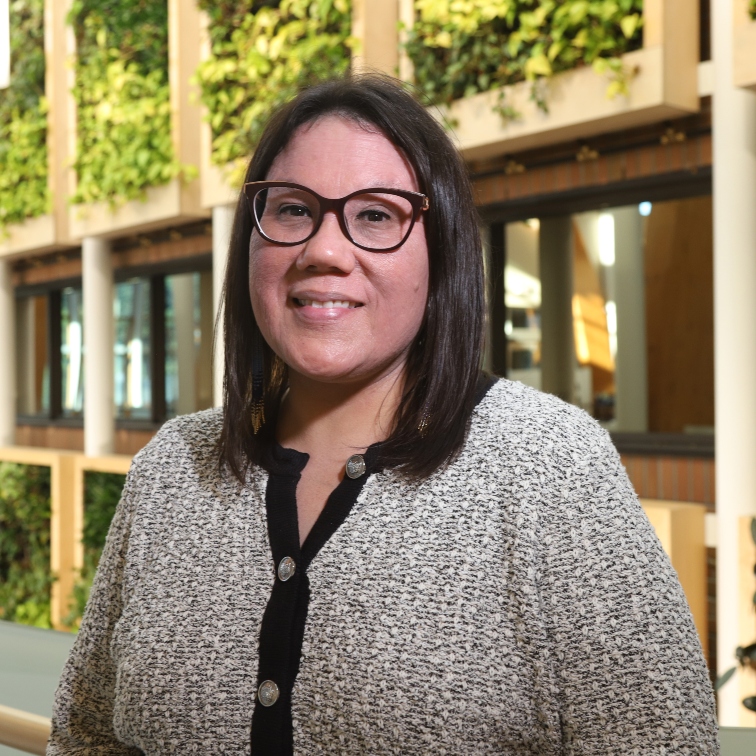
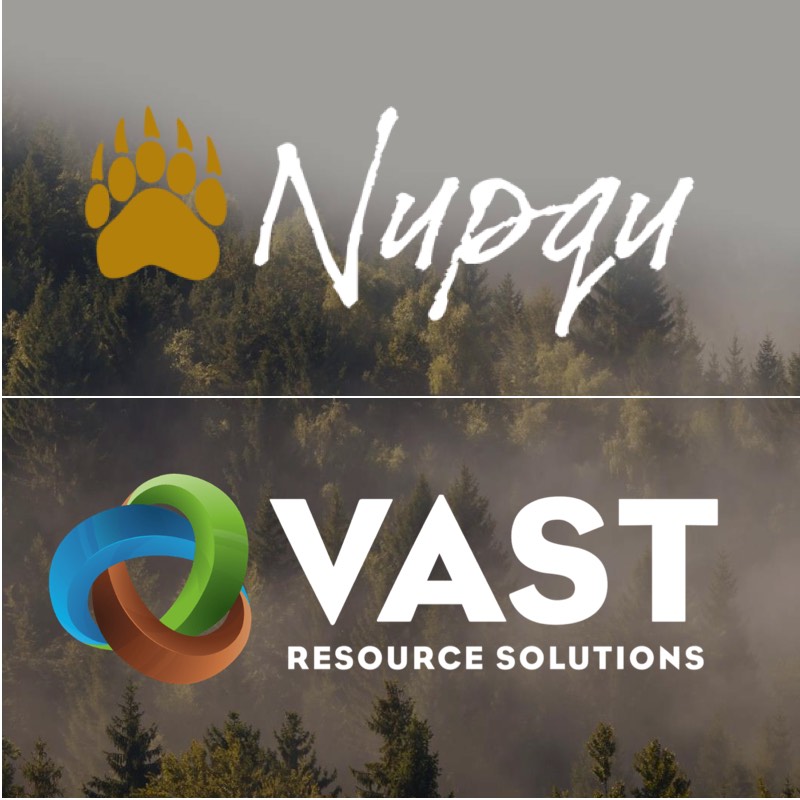
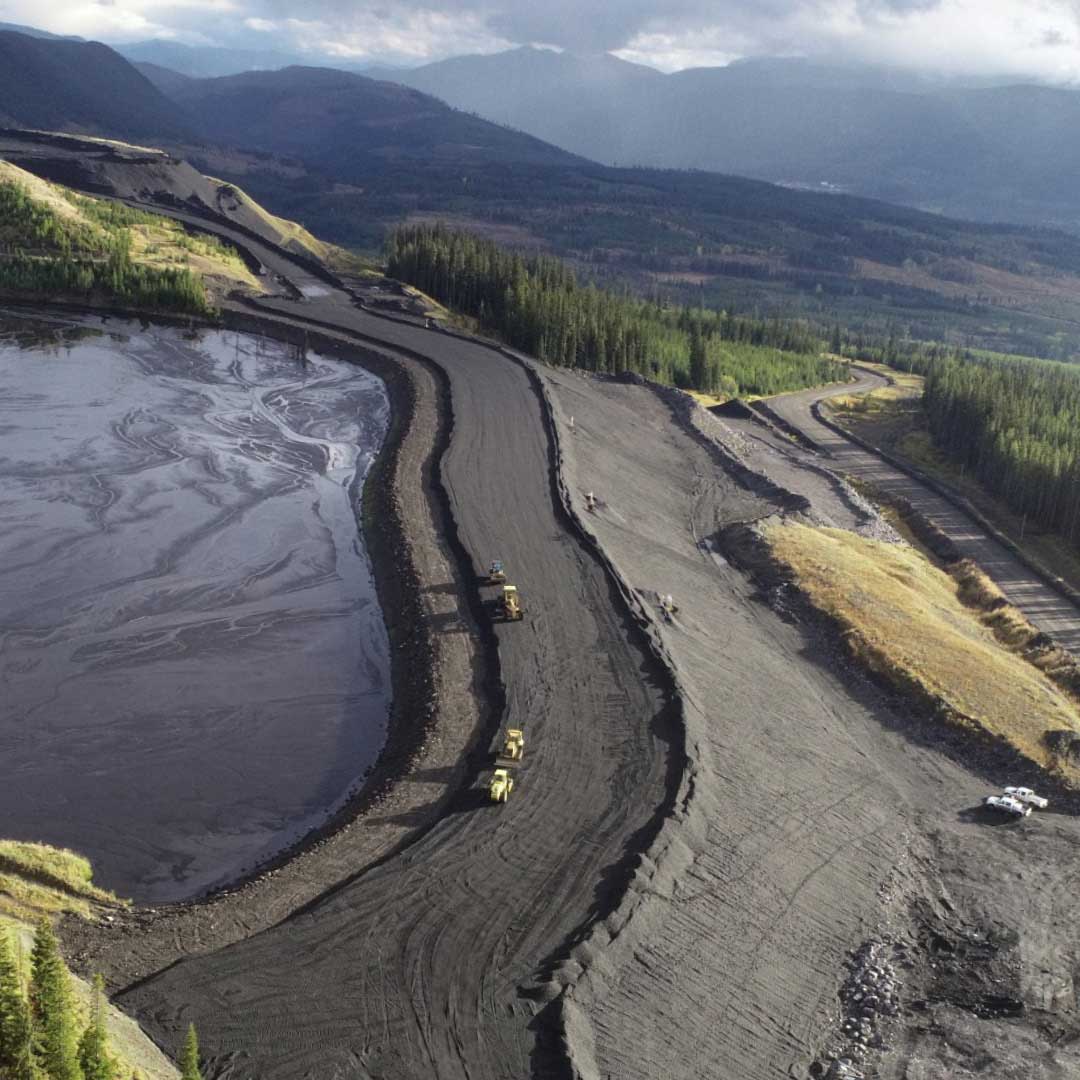
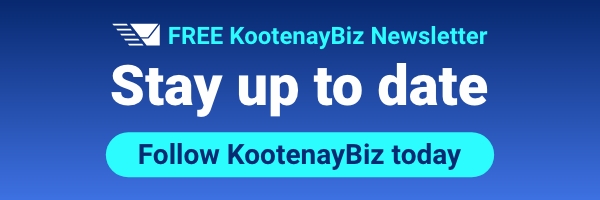
Comments